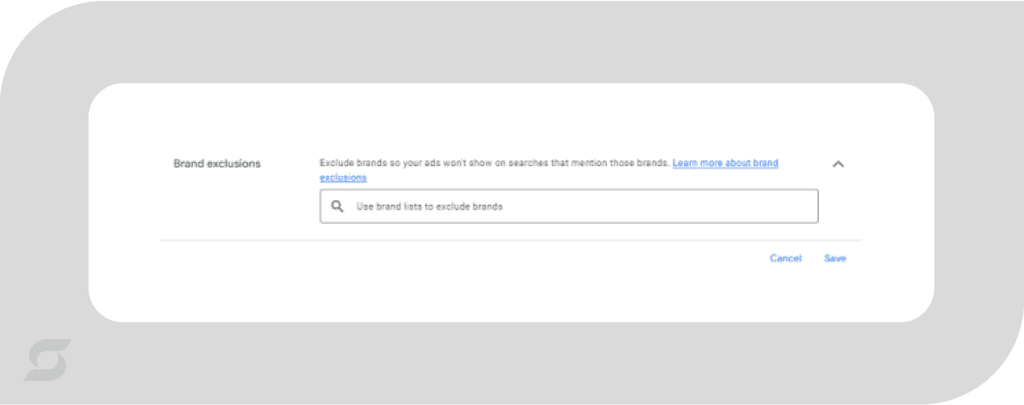Looking to optimize your Google Ads campaigns? Understanding the nuances of Performance Max vs. Demand Gen is crucial. Both offer their own strengths within your digital marketing strategy, and they cater to different campaign objectives.
This guide delves into the core differences between these campaign types. Discover insights into targeting options, inventory, reporting, and best practices to help you make informed decisions for your business.
Get more insights on incorporating a data-driven marketing strategy and driving a significant return on investment for your business.
Key Differences Between Performance Max vs. Demand Gen
Targeting
Both Performance Max and Demand Gen offer a variety of options to reach your target audience. But, the way they utilize this data differs significantly. Here’s a breakdown of available inputs and their application:
First Party Data: Leverage customer lists and website visitor data to target your highest-converting customers and most engaged website visitors.
Detailed Demographics: Refine inputs by specifying the most valuable demographics for your business. These could include gender, age range, parental status, and household income.
Demographics: Tailor your reach by providing information like age of children, marital status, homeownership, and employment (company size and industry) based on your ideal customer profile.
Life Events: Capitalize on key life moments like moving, job changes, or marriage to reach potential customers during opportune times.
In-Market: Tap into Google’s data to target users who have recently shown interest in purchasing specific products or services relevant to your offerings.
Affinity: Target passionate audiences with specific interests, hobbies, or subjects closely aligned with your brand.
Search Intent: Reach users actively searching for specific keywords or phrases on Google or YouTube relevant to your product or service.
Lookalike: Expand your reach by targeting users with similar characteristics and buying behaviors to your existing customer base.
Exclusions: Prevent ad fatigue and refine targeting by excluding past website visitors or customers from seeing your ads.
The main difference, however, is how these inputs are leveraged.
In Performance Max, there are no fixed audience targeting parameters. For example, you cannot choose to only target those aged 35+ who have recently searched for HVAC services. Instead, Google gives advertisers the ability to provide an audience signal (using the inputs above). It serves as the mechanism for guiding the machine learning algorithm in the right direction.
It’s important to note that even with these audience signals, Google can (and likely will) target those outside of these boundaries if they have a high likelihood of converting. Google’s AI focuses on meeting your performance goals first. If that requires stretching beyond your desired audience, then so be it.
Demand Gen, on the other hand, is more traditional. The targeting parameters you set must be adhered to by Google. If you only desire to reach those 35+ and recently searched for HVAC services, Demand Gen provides that capability.
Demand Gen campaigns can also target lookalike audiences (not found elsewhere in Google). They can also exclude both first-party and lookalike audiences, both of which offer extra layers of control.
Finally, Demand Gen does offer some AI targeting capabilities for those looking to expand their reach. This feature, optimized targeting, is available at the ad group level. When turned on, Google will find those most likely to convert that fall outside of your targeting parameters.
Inventory
Performance Max can serve on all channels, which includes Search, Shopping, YouTube, Display, Gmail, Discover, and Maps. This makes Performance Max very attractive to those looking for full inventory coverage, while still optimizing towards business objectives.
Demand Gen, on the other hand, only serves on YouTube, Gmail, and Discover inventory. Demand Gen is geared more towards generating demand, rather than capturing existing demand. Focusing efforts on highly visual channels provides those results.
Reporting and Visibility
Both Performance Max and Demand Gen can break out performance by time, device, and location.
Outside of that, Performance Max is intentionally limited in reporting. You can’t natively see delivery and performance metrics by channel, audience, or creative. There are very limited search terms shown in the insights tab. And, there are very limited placements shown in the “Performance Max campaigns placement” report.
This intentional limitation of data in Performance Max is a strategic decision by Google to prioritize automation and efficiency. By reducing granular control, the algorithm has more freedom to optimize campaigns for maximum performance.
On the other hand, Demand Gen provides much more data on placement and audience performance. It offers a more hands-on approach, providing detailed insights into campaign performance to facilitate granular adjustments.
Essentially, Performance Max is designed for those seeking rapid-scale and AI-driven optimization. Demand Gen caters to advertisers who prioritize control and in-depth analysis.
Why You Should Leverage Both Simultaneously
It doesn’t have to be Performance Max vs. Demand Gen, one or the other. Combining Performance Max and Demand Gen often yields optimal results, regardless of campaign objectives.
Performance Max excels at rapidly capturing conversion volume, while adhering to performance goals. Although, its efficiency-driven nature can sometimes limit access to premium inventory, particularly on YouTube. Demand Gen complements this by effectively filling these inventory gaps while maintaining granular control over audience targeting and bidding strategies. By leveraging low-funnel audiences and conversion-focused bidding, Demand Gen can significantly contribute to bottom-funnel metrics.
These two campaign types pair well together even if the goals are different. Use a Performance Max campaign as the primary lead to capture revenue. It leverages its machine learning capabilities to optimize for conversions.
Simultaneously, employ Demand Gen to build brand awareness and generate demand through upper-funnel targeting and messaging. By combining these two approaches, you can effectively cover the entire sales funnel, from initial discovery to purchase.
Performance Max Best Practices and Common Pitfalls
Brand Term Exclusions (or Lack Thereof)
Performance Max serves on search, and search is composed of brand and non-brand terms. Almost always, a company’s branded terms are cheaper to buy and provide more value than non-brand terms. For this reason, plus the lack of visibility, if branded terms are kept in PMax campaigns, the results may be inflated. The campaign is taking credit for grabbing the lowest hanging fruit, and it might even be overpaying for those brand terms.
You can exclude brand terms in a few different ways. The most immediate way is to leverage brand exclusions in the campaign’s settings. This allows you to specify brands that you don’t want to show ads for when searched.
However, we’ve seen branded terms slip through the cracks, despite applying these restrictions. You should also reach out to your Google rep (and/or Google support) to apply branded campaign-level negative keywords.
Search Term Optimization
Another good practice is to regularly check the insights tab of the Performance Max campaign for the search term trends. If you see search terms that have no relevance to anything your business offers, exclude those terms at the account level.
For terms that are relevant, but don’t belong in the campaign you’re optimizing, reach out to your Google rep. Ask them to apply those negative keywords at the campaign level. Doing this with a regular frequency will allow you to improve the campaign’s efficiency over time.
Seed Lists for Audience Signals
For best results, when providing Google a first-party seed list to model off of, use the most valuable signals available. This could be past customers, cart abandoners, or something else that signals an intent to purchase. More shallow signals like website visits are still valuable. But, they won’t provide as much information to maximize conversions or conversion value.
Demand Gen Best Practices and Common Pitfalls
Optimized Targeting
As mentioned, optimized targeting gives Google freedom. It allows them to expand beyond your targeting parameters, as long as they have a high likelihood of converting. This is definitely worth testing, but in our experience, it doesn’t always work.
In fact, we’ve seen cases where the vast majority of spend went towards the optimized targeting bucket. But, the conversion volume didn’t follow, or the quality was lower.
Make sure to turn this setting off when you’re not intentionally opting into it. This setting is on by default when you create a new campaign or ad group, and it’s easy to miss when in the build phase. You can turn this off at the ad group level by going to the ad group level settings.
Seed Lists for Lookalike Targeting
Demand Gen’s lookalike targeting, akin to Performance Max’s audience signals, thrives on high-quality seed lists. Providing Google with your most valuable first-party data is crucial for optimizing the algorithm’s targeting capabilities. Ideally, that’s a customer list. High-intent actions, like cart abandons or booked appointments, can also serve as effective seed lists.
When creating lookalike audiences, carefully consider the segment reach. A narrower reach of 2.5% prioritizes similarity to the seed list but limits scale. A broader 10% reach increases audience size at the expense of precision. Google recommends a balanced 5% reach, but experimentation is key to finding the optimal setting for your campaign.
Ad Group Level Location Targets
Another proprietary feature of Demand Gen campaigns is the ability to leverage location targeting at the ad group level. All other campaigns in Google Ads require location targeting fixed at the campaign level. This provides an opportunity to target multiple locations within one campaign. That consolidates the conversion data and allows for faster machine learning and stronger bid strategies.
Even if you only have one area you’re targeting (i.e. Chicagoland area), you can divide the ad groups by counties, cities, ZIP codes, and more. This personalization and granular targeting allows you to hone in your ad weight and message to very specific places. That generally leads to better results within your campaign.
Recommendations for Performance Max vs. Demand Gen
Negative Placements and Content Suitability Settings
In both campaign types, the inability to add negative placements at the campaign level necessitates a strategic approach to content suitability. This, coupled with the account-level limit of 65,000 placements. Proactive management is crucial to prevent wasted budget and suboptimal performance. We recommend a blanket exclusion of mobile apps (by category), kids YouTube channels, non-English YouTube channels, and gaming websites.
While you can automate for YouTube campaigns, Demand Gen and PMax require you to manually identify and exclude. Given the limitations, it’s essential to prioritize negative placements based on campaign objectives and performance metrics. Regular monitoring and refinement of the exclusions are key to maintaining campaign efficiency.
Conversion Goals
We recommend optimizing both Demand Gen and Performance Max campaigns towards the most low-funnel signals possible. That maximizes conversions and ensures a strong return on investment. This means focusing on actions such as purchases, sign-ups, or other direct conversion activities.
Performance Max excels in leveraging Google’s AI to dynamically adjust bids and targeting. It aims to meet these low-funnel conversion goals efficiently across multiple channels.
However, there are instances where you can use Demand Gen effectively for upper-funnel initiatives. Let’s say your objective is to build brand awareness or generate interest. Demand Gen’s ability to create visually engaging ads on platforms like YouTube, Discover, and Gmail is invaluable.
By balancing both approaches, you drive immediate conversions with Performance Max while Demand Gen nurtures and expands your audience. You facilitate a robust marketing strategy that covers the entire customer journey.
Creative Swaps
Regularly updating your creative assets is crucial for maintaining audience engagement and campaign performance.
In Performance Max, the system automatically tests different combinations of your creative elements to find the most effective pairings. This continuous testing helps keep your ads fresh and relevant.
Demand Gen, while also benefiting from updated creatives, allows for more manual oversight. You can test and swap out creative assets based on detailed performance metrics. This ensures your ads remain compelling and effective over time.
Landing Pages
You can have the best ad campaign in the world. But if it’s sending traffic to a low quality landing page that struggles to convert, you’re wasting your efforts and website traffic. A well-crafted landing page with a clear call to action is the cornerstone of any successful campaign.
In Performance Max and Demand Gen, the algorithms leverage landing page insights to refine audience targeting. Providing Google with clear, optimized, and conversion-focused landing pages is key. A subpar landing page can hinder campaign performance by misleading the algorithms and reducing conversion rates.
Conclusion
Considering the differences between Performance Max vs. Demand Gen is essential for selecting the right approach for your business.
Performance Max offers broad reach and AI-driven optimization, making it ideal for quickly capturing conversions across multiple channels. Demand Gen provides detailed insights and control, allowing for precise targeting and visually-engaging ad formats.
By leveraging both, you create a comprehensive strategy that covers the entire customer journey, from awareness to conversion. This guide will help inform your decision-making and maximize the impact of your Google Ads campaigns.
Get in touch to learn more about how Scale Marketing uses insights to drive growth and business results for companies like yours.












